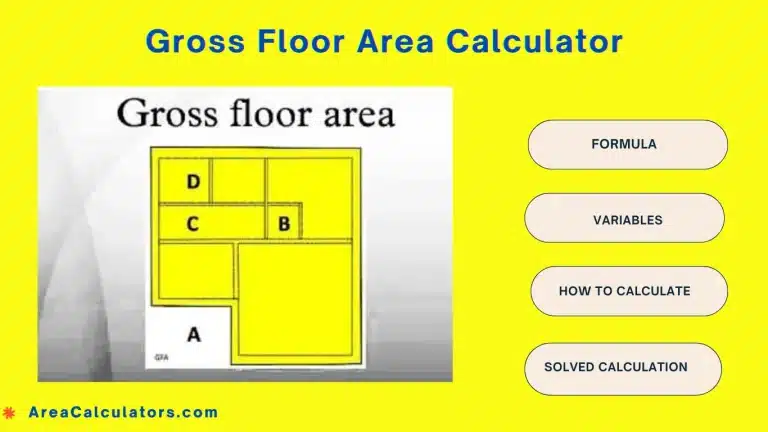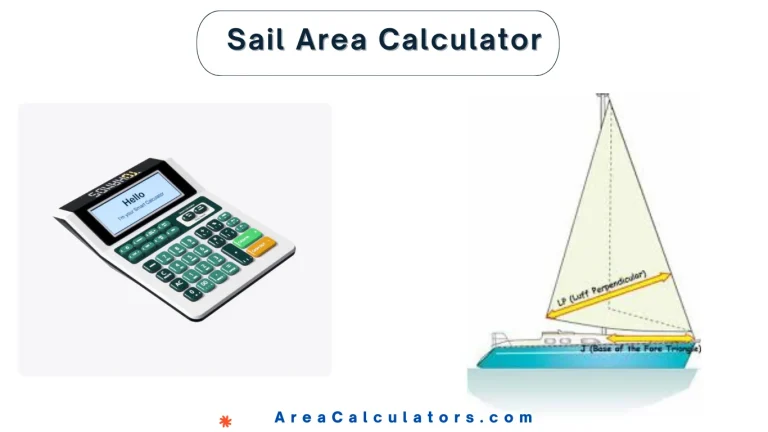In any system where air or fluid is being filtered—whether it's an HVAC unit, industrial filtration line, or even a medical device—the pressure drop across the filter is a key performance indicator. Knowing how much resistance a filter imposes on the flow isn't just useful—it's essential. That’s where the Filter Pressure Drop Calculator comes in.
This calculator is a critical tool for engineers, facility managers, and technicians who aim to balance energy efficiency, system longevity, and air quality. By quantifying the resistance a filter introduces, it empowers users to make informed choices about filter design, replacement intervals, and operational parameters.
What Is Pressure Drop in Filters?
Pressure drop refers to the reduction in pressure as a fluid or gas passes through a filter. It results from the resistance that the filter media imposes on the moving fluid or air. Simply put, filters aren't just passive barriers—they actively impact flow dynamics.
Typical examples include:
-
Air filters in HVAC systems reducing air pressure
-
Oil filters in automotive engines affecting fluid flow
-
Water filters in processing plants impeding liquid pressure
Pressure drop is usually measured in inches of water gauge (in. w.g.) for air and in pounds per square inch (PSI) for liquids.
Why It Matters in System Design and Performance
Contents
- 1 Why It Matters in System Design and Performance
- 2 Fluid Dynamics and Resistance
- 3 Key Factors Influencing Pressure Drop
- 4 Core Functionality and Purpose
- 5 Industries That Use This Tool
- 6 Essential Parameters for Air Filters
- 7 Inputs for Liquid Filtration Systems
- 8 Darcy’s Law and Pressure Drop Equations
- 9 Simplified Example for Airflow Filters
- 10 Operational Efficiency and Cost Savings
- 11 System Longevity and Safety Assurance
- 12 HVAC and Ventilation Systems
- 13 Industrial Filtration and Manufacturing
- 14 Basic Formula and Units Explained
- 15 Worked Example with Realistic Values
- 16 Measurement Inaccuracies and Filter Degradation
- 17 Assumptions vs. Real-World Performance
- 18 Precision, Versatility, and Interface Design
- 19 Cloud-Based vs. Offline Tools
When pressure drop is too high, several issues arise:
-
Reduced system efficiency
-
Increased energy consumption
-
Shortened equipment life due to stress
-
Inadequate filtration or bypass scenarios
Too low a pressure drop, on the other hand, could suggest ineffective filtering. Hence, understanding and calculating the optimal pressure drop is central to achieving both efficiency and system reliability.
The Science Behind Filter Pressure Drop
Grasping the physics behind pressure drop helps users make better decisions when configuring or maintaining their systems.
Fluid Dynamics and Resistance
When a fluid flows through a medium (in this case, the filter), it experiences resistance. This resistance is due to:
-
Friction with the filter fibers
-
Constriction of flow paths
-
Accumulated particulate blocking pathways
As flow rate increases, resistance often rises non-linearly. In gases, this can also relate to compressibility effects, while in liquids, viscosity and particulate concentration play a more dominant role.
Key Factors Influencing Pressure Drop
Several variables affect the pressure drop across a filter:
-
Flow rate: Higher rates mean more resistance.
-
Filter media: Denser or finer materials increase drop.
-
Filter surface area: Larger areas reduce drop.
-
Contaminant load: Dirtier filters mean higher drop.
-
Temperature and humidity: Particularly impactful in gas filtration.
Understanding these helps in configuring systems that strike the right balance between protection and performance.
What Is a Filter Pressure Drop Calculator?
A Filter Pressure Drop Calculator is a digital or manual tool used to estimate the pressure loss that a gas or fluid will experience as it passes through a filter.
Core Functionality and Purpose
The calculator works by:
-
Taking specific input parameters (like flow rate, viscosity, and filter dimensions)
-
Applying a formula (such as Darcy’s Law or empirical flow resistance equations)
-
Outputting the expected pressure drop
It ensures filters are neither over- nor under-performing, helping you catch problems before they become failures.
Industries That Use This Tool
This calculator is widely used in:
-
HVAC and building systems
-
Manufacturing and process industries
-
Pharmaceutical and cleanroom environments
-
Food and beverage production
-
Automotive and heavy machinery
Its versatility makes it indispensable across domains where filtration is critical to safety, efficiency, and compliance.
Inputs Required for Accurate Calculation
To make precise predictions, these calculators need specific data points depending on whether you’re dealing with air or liquid filters.
Essential Parameters for Air Filters
Air systems typically require:
-
Airflow rate (CFM or m³/h)
-
Filter face area
-
Filter type and media density
-
Initial and final pressure drop ratings
-
Air temperature and humidity (optional)
Many calculators use predefined values for common filter types, streamlining the input process.
Inputs for Liquid Filtration Systems
For fluids, key inputs include:
-
Flow rate (GPM or L/min)
-
Fluid viscosity
-
Filter element surface area
-
Pore size of the filter media
-
Operating pressure and temperature
By providing these, you ensure the output pressure drop reflects real-world conditions.
Understanding the Calculation Formula
Now, let’s get into the math behind the magic. The formulas may differ based on the application, but the concepts remain consistent.
Darcy’s Law and Pressure Drop Equations
Darcy’s Law is commonly used for liquid filtration and looks like this:
ΔP = (μ × L × V) / (K × A)
Where:
-
ΔP = pressure drop
-
μ = fluid viscosity
-
L = thickness of filter media
-
V = flow velocity
-
K = permeability constant
-
A = cross-sectional area
For air filters, empirical formulas are often based on test data and resemble:
ΔP = k × Qⁿ
Where:
-
ΔP = pressure drop
-
Q = flow rate
-
k, n = constants based on filter type
Simplified Example for Airflow Filters
Let’s assume:
-
Airflow = 1000 CFM
-
Filter surface area = 4 ft²
-
Filter coefficient (k) = 0.05
-
Exponent (n) = 1.5
ΔP = 0.05 × (1000)¹·⁵ ≈ 158.1 in. w.g.
This would suggest a high-pressure drop and likely an unsuitable filter for the system.
Benefits of Using a Filter Pressure Drop Calculator
Why calculate manually when the tool can do it for you? Here’s how it helps:
Operational Efficiency and Cost Savings
-
Saves energy by selecting filters with optimal pressure characteristics
-
Prevents overloading fans and pumps
-
Extends equipment lifespan by avoiding excessive strain
-
Cuts maintenance costs through timely filter replacement
System Longevity and Safety Assurance
-
Ensures systems remain within design parameters
-
Reduces risk of failures due to under- or over-pressured filters
-
Helps maintain regulatory compliance in critical environments
The tool acts as a diagnostic and preventive asset rolled into one.
Common Applications and Use Cases
Let’s break down some everyday uses of these calculators.
HVAC and Ventilation Systems
Whether in homes, offices, or factories:
-
Engineers use the tool to pick filters that maintain indoor air quality without spiking energy bills.
-
It’s crucial during system upgrades, ensuring compatibility with new fans or ducts.
Industrial Filtration and Manufacturing
In processing facilities:
-
Fluid systems are designed for minimal energy loss.
-
Filters are changed based on calculated thresholds rather than guesswork.
-
Predictive maintenance becomes easier and more cost-effective.
Manual Calculation: Step-by-Step Guide
For those wanting to go the old-school route, here’s how to calculate pressure drop manually.
Basic Formula and Units Explained
For liquid flow:
ΔP = (Q × μ × L) / (A × K)
Where:
-
Q: flow rate
-
μ: dynamic viscosity
-
L: filter thickness
-
A: surface area
-
K: media permeability
Use consistent units:
-
Flow: m³/s or GPM
-
Pressure: PSI or Pascal
-
Area: ft² or m²
Worked Example with Realistic Values
Assume:
-
Flow rate: 10 GPM
-
Viscosity: 1 cP (like water)
-
Filter thickness: 0.2 m
-
Area: 0.5 m²
-
Permeability: 1×10⁻¹¹ m²
Calculate:
ΔP = (10 × 1 × 0.2) / (0.5 × 1e-11) = 4e+11 Pa
Converted to PSI: ~58,000 PSI (which indicates an issue—values should be checked or media adjusted).
Challenges and Limitations
Even with a great tool, real-world use demands a bit of caution.
Measurement Inaccuracies and Filter Degradation
-
Pressure sensors may drift over time.
-
Filters clog unevenly, causing localized pressure surges.
-
Dirt loading isn’t always predictable.
These factors can skew results.
Assumptions vs. Real-World Performance
Calculators often assume:
-
Uniform media permeability
-
Laminar flow conditions
-
Ideal operating temperature
In practice, conditions fluctuate. Always verify tool predictions against actual system data.
Top Features to Look for in a Calculator Tool
Not all tools are equal. Here’s what separates the best from the rest.
Precision, Versatility, and Interface Design
-
Accepts diverse inputs and units
-
Adapts to air and liquid systems
-
Outputs in visual charts or downloadable formats
-
Offers troubleshooting alerts
Cloud-Based vs. Offline Tools
| Feature | Cloud-Based | Offline Tools |
|---|---|---|
| Accessibility | Anywhere, anytime | On dedicated devices |
| Updates | Real-time | Manual |
| Integration | Easy with IoT systems | Requires custom setup |
Choose based on your workflow needs.
FAQs:
Q1: What is a filter pressure drop calculator used for?
It estimates the pressure loss as fluid or air flows through a filter, helping optimize performance and prevent system issues.
Q2: Can it be used for both air and water filters?
Yes, most calculators accommodate both with different parameter sets.
Q3: How often should I calculate pressure drop?
Regularly during maintenance and whenever filter changes or system upgrades are planned.
Q4: What does a high-pressure drop indicate?
It may signal a clogged or undersized filter or an overly dense media.
Q5: Is manual calculation still necessary?
In remote locations or for double-checking tool accuracy, manual methods remain valuable.
Q6: Do these calculators work with HEPA filters?
Absolutely. Just input the correct airflow and surface data.
Conclusion:
A Filter Pressure Drop Calculator is more than a convenience—it’s a necessity in any system where flow efficiency matters. By helping users determine optimal filter selections, replacement times, and operational thresholds, it ensures safety, cost savings, and system reliability.
Whether you're running a commercial HVAC unit, overseeing an industrial line, or designing a medical filtration system, this tool arms you with the insight to make data-driven decisions. So don’t leave pressure drop to guesswork—calculate it with confidence and precision.






